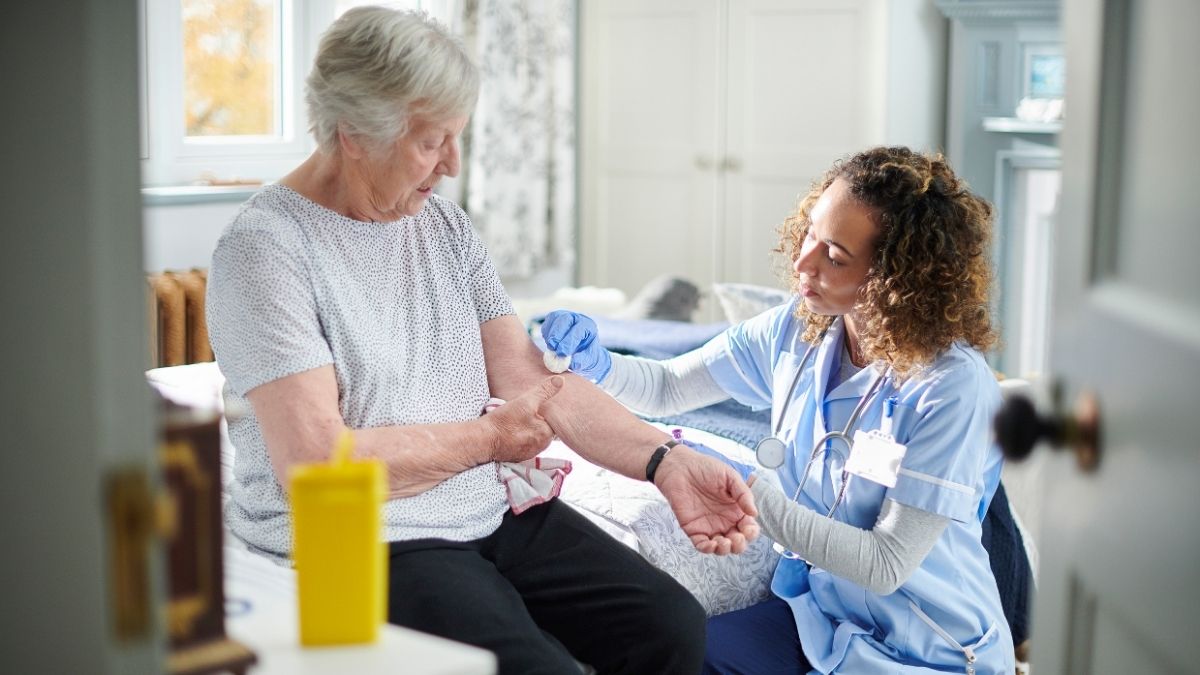If you’re wondering how much urgent care cost without insurance, you’re not alone – this question weighs heavily on the minds of millions of uninsured Americans facing sudden illness or minor injuries.

The answer might surprise you. Most urgent care visits without insurance range from $150 to $400, depending on your location and the services you need. While this may seem steep, it’s significantly less expensive than an emergency room visit, which can cost thousands of dollars.
Key Takeaways
- Urgent care visits without insurance typically cost $150-$400 per visit.
- Basic consultations start around $150, while complex treatments can reach $400 or more.
- Additional services like X-rays, lab tests, and medications increase your total bill.
- Many urgent care centers offer cash-pay discounts of 10-30% for uninsured patients.
- Geographic location significantly impacts pricing, with urban areas generally more expensive.
- Payment plans and financial assistance programs are often available for uninsured patients.
- Affordable healthcare alternatives like health sharing plans can dramatically reduce these costs.
Understanding Urgent Care Costs Without Insurance
Basic Consultation and Exam
For uninsured patients wondering how much urgent care cost without insurance for a standard visit, expect to pay between $150-$250 for the basic consultation and physical examination. This urgent care without insurance pricing covers the healthcare provider’s time to assess your condition, review symptoms, and provide a diagnosis.
Most urgent care centers charge a flat facility fee that includes the initial assessment. This base cost applies whether you’re treating a minor cold, checking a suspicious mole, or getting a routine physical. Understanding how much urgent care cost without insurance for these basic services helps you budget for unexpected medical needs.
Common Treatments and Procedures
Beyond the basic consultation, specific treatments add to your bill:
Minor Wound Care: Simple cuts requiring cleaning and bandaging typically add $25-$75 to your visit. More complex wound care, including sutures, can increase costs by $100-$200.
Strep Throat Testing: Rapid strep tests usually cost an additional $25-$50, while throat cultures may add $50-$100 to your bill.
Flu and COVID-19 Testing: Most urgent care centers charge $50-$150 for rapid flu tests and $100-$200 for COVID-19 testing.
Vaccinations: Flu shots typically cost $30-$50, while other immunizations range from $50-$200 depending on the vaccine type.
Diagnostic Services
Diagnostic tests significantly impact urgent care without insurance costs:
X-rays: Basic X-rays for suspected fractures or injuries typically add $200-$400 to your visit. More complex imaging studies can cost even more.
Laboratory Tests: Blood work ranges from $100-$300 depending on the complexity. Simple tests like blood glucose or pregnancy tests are on the lower end, while comprehensive metabolic panels cost more.
Urinalysis: Basic urine tests typically add $50-$100 to your urgent care visit.
EKGs: Heart rhythm tests usually cost an additional $150-$300.
Factors That Affect Urgent Care Pricing
Geographic Location
Where you live dramatically impacts urgent care costs. Urban areas like New York City or San Francisco typically charge 30-50% more than rural locations. A basic urgent care visit that costs $150 in rural Georgia might cost $250 in downtown Los Angeles.
Time of Visit
Many urgent care centers charge higher rates for:
- Evening hours (typically after 5 PM)
- Weekend visits
- Holiday appointments
These premium hours can add 20-40% to your base visit cost.
Severity and Complexity
Simple conditions like minor colds or basic injuries cost less than complex medical issues requiring extensive evaluation. Multi-system problems or conditions requiring specialist consultation increase your bill significantly.
Facility Type
Independent urgent care centers often offer more competitive pricing than hospital-affiliated facilities. Corporate chains may have standardized pricing that’s either higher or lower than local competitors.
Money-Saving Strategies for Uninsured Patients
Cash-Pay Discounts
Most urgent care centers offer substantial discounts for patients paying cash upfront. These discounts typically range from 10-30% off the standard rate. Always ask about cash-pay pricing before receiving treatment.
Payment Plans
Many facilities offer interest-free payment plans for uninsured patients. These arrangements allow you to spread costs over several months, making urgent care more affordable. When considering how much urgent care cost without insurance, remember that payment plans can make even higher-cost visits manageable.
Negotiate Your Bill
Many people ask, “How expensive is urgent care without insurance compared to other medical options?” The reality is that urgent care without insurance costs significantly less than emergency room visits while providing comprehensive care for non-emergency conditions.
Don’t hesitate to discuss pricing with urgent care staff. Many centers have financial counselors who can help reduce your costs or arrange affordable payment options.
Compare Prices
Call multiple urgent care centers in your area to compare pricing. Costs can vary significantly even within the same city. When researching how much urgent care cost without insurance, you’ll find that pricing transparency varies by facility.
Consider Telehealth First
For non-emergency conditions, telehealth consultations typically cost $50-$150 and can help you determine if urgent care is necessary.
Urgent Care vs. Emergency Room Costs
Understanding the cost difference between urgent care and emergency rooms is crucial for uninsured patients:
Urgent Care: $150-$400 for most visits Emergency Room: $1,000-$5,000+ for similar conditions
Emergency rooms are required to treat patients regardless of insurance status under EMTALA (Emergency Medical Treatment and Labor Act), but they’re exponentially more expensive. Save emergency room visits for true emergencies like:
- Chest pain or difficulty breathing
- Severe injuries or trauma
- Signs of stroke or heart attack
- Severe allergic reactions
When Urgent Care Makes Financial Sense
Urgent care centers are the most cost-effective option for:
- Minor injuries that need immediate attention
- Cold and flu symptoms
- Skin conditions or rashes
- Minor burns or cuts
- Urinary tract infections
- Simple fractures or sprains
Affordable Healthcare Alternatives
Health Sharing Plans
If you’re frequently asking how much does urgent care cost without insurance, it might be time to consider affordable healthcare alternatives. Health sharing plans typically cost $100-$400 monthly for families and can significantly reduce your urgent care expenses.
These faith-based programs help members share medical costs, including urgent care visits. Most health sharing plans have lower monthly costs than traditional insurance while providing substantial savings on medical services.
Short-Term Health Insurance
Short-term health insurance plans can bridge coverage gaps and provide urgent care benefits at affordable monthly rates. These plans typically cost less than comprehensive insurance while offering protection against unexpected medical expenses.
Accident Plans
For those seeking very inexpensive protection specifically for accidents, accident plans offer targeted coverage at extremely low monthly costs. These plans typically cost $15-$50 per month and provide benefits for accident-related urgent care visits, emergency room visits, and follow-up treatments.
While accident plans don’t cover illnesses or routine care, they’re perfect for active individuals or families who want affordable protection against unexpected injuries that could lead to costly urgent care visits. Details and rates are available on the Accident Plans page.
Compare Pricing on the Best HealthShare Plans Available
Urgent Care Cost Without Insurance Conclusion
Understanding how much urgent care cost without insurance empowers you to make informed healthcare decisions. With average costs ranging from $150-$400 per visit, urgent care remains a more affordable option than emergency room visits for non-emergency conditions.
However, if you find yourself frequently needing medical care, consider exploring affordable healthcare alternatives. Health sharing plans and short-term insurance options can provide significant savings while ensuring you have access to quality healthcare when you need it.
Don’t let the fear of medical costs prevent you from seeking necessary care. Many urgent care centers offer payment plans, cash discounts, and financial assistance programs to help uninsured patients access affordable healthcare.
Ready to explore affordable healthcare options that can dramatically reduce your urgent care costs? Schedule a free consultation with one of our Personal Benefits Managers at HSA for America. We’ll help you find personalized healthcare solutions that fit your budget and needs. Call us today at 800-913-0172 to discover how much you could save.
For Further Reading:
Frequently Asked Questions (F.A.Q.)
Q: How expensive is urgent care without insurance?
A: Urgent care without insurance typically costs $150-$400 per visit, depending on services needed. Basic consultations start around $150, while complex treatments requiring X-rays or lab work can reach $400 or more.
Q: What factors affect urgent care pricing?
A: Several factors impact urgent care costs including geographic location, time of visit (evenings and weekends cost more), complexity of your condition, diagnostic tests needed, and whether the facility offers cash-pay discounts.
Q: Can urgent care centers refuse treatment if I can't pay?
A: Unlike emergency rooms, urgent care centers can require payment before treatment. However, many offer payment plans or financial assistance programs.
Q: Are there low-cost clinics for uninsured patients?
A: Yes, federally qualified health centers (FQHCs) and community health centers offer sliding-scale fees based on income. These facilities specifically serve uninsured and underinsured patients.
Q: Can you negotiate urgent care costs?
A: Absolutely. Many urgent care centers will work with uninsured patients to reduce bills or arrange affordable payment plans. Always ask about cash-pay discounts and financial hardship programs before receiving treatment.




